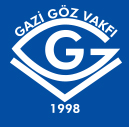2M.D. Sarikamis Military Hospital, Eye Clinic, Kars/TURKEY
3M.D. Associate Professor, Gulhane Military Medical Hospital, Eye Clinic, Ankara/TURKEY Purpose: To determine the possible relationship between foveal and subfoveal-layer thickness, visual acuity changes, foveal serous detachment heights and resolution times in spontaneously resolved central serous chorioretinopathy (CSCR) patients.
Materials and Methods: Clinical data of unilateral spontaneously resolved CSCR patients were reviewed retrospectively in our clinic. Unaffected fellow eyes of patients accepted as control group. Optical Cohorens Tomography (OCT) and fundus flurescein angiography (FFA) were used to diagnose CSCR. Data of resolution time, visual acuity changes, central foveal thickness (CFT), sub-macular layer thicknesses and foveal serous detachment height were recorded.
Results: Thirty eyes of 30 CSCR patients included the study. As control group unaffected eyes were used. CFT, outer nuclear layer(ONL) and photoreceptor layer thickness was thinner in affected eyes (CFT; 249.69±19.67 µm and 259.37±19.54 µm, p<0.001, ONL; 89.77±5.89 µm and 92.63±5.54 µm, p<0.001 photoreceptor layer; 70.9±3.75 µm and 76.03±4.76 µm, p<0.001). Foveal serous detachment height was 345.12±161.18 µm in patients with micropsia and 151.92 ±62.6 µm in without. (p<0.01) There was no statistically significant difference between these groups in CFT measurements. Photoreceptor and ONL thicknesses were significantly thinner in patients with final visual acuity of logMAR 0,1 than patients with visual acuity of logMAR 0. (68.29±3.25 µm, 71.7±3.5 µm p=0.032 for photoreceptor layer and 85.14±5.04 µm, 91.14±5.47 µm p=0.021 for ONL) Significant negative correlation between final CFT and logMAR visual acuity also supports these findings.
Conclusion: Central foveal thickness, ONL and photoreceptor layer thickness may be a predictor for final visual acuity in spontaneously resolved CSCR patients.
Keywords : Central serous chorioretinopathy, optical coherence tomography, fovea




